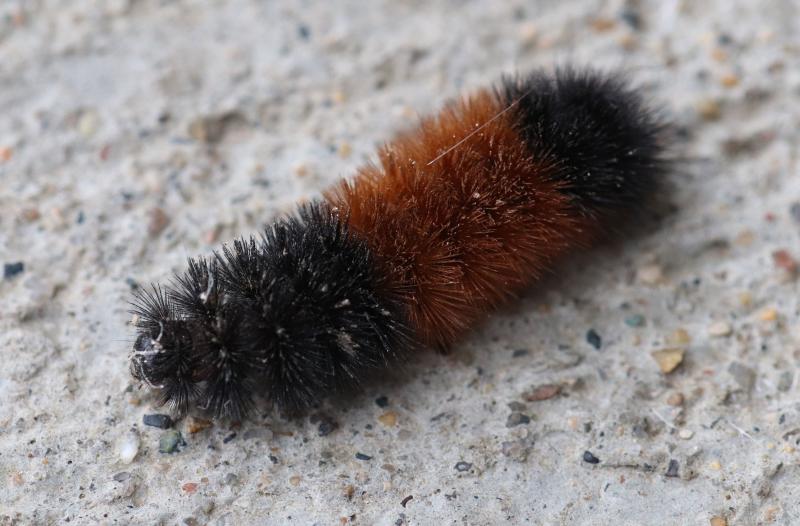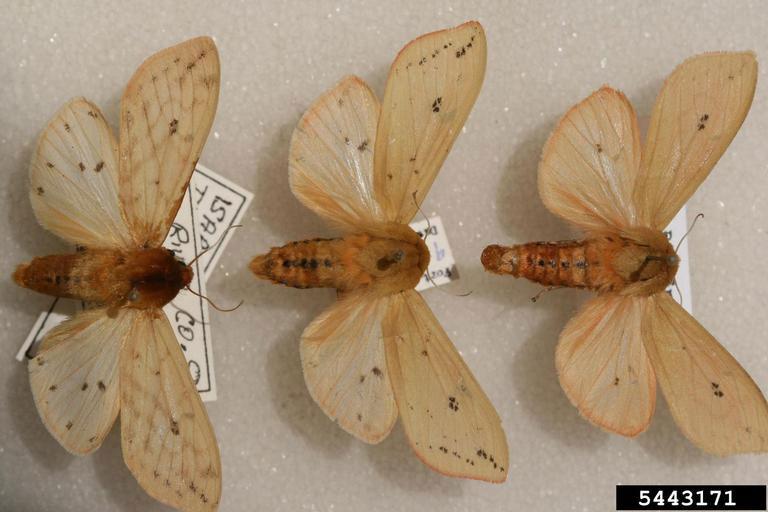Isabella Tiger Moth (Woolly Bear Caterpillar)

The recent warm temperatures woke up some of our overwintering insects. Anyone that spent the weekend outdoors may have observed flies, wasps, bees, and others flying (or crawling) around for the first time this year.
One of these insects is a familiar one, the woolly bear caterpillar (Figure 1). At first glance, it might be odd to see a caterpillar in the spring.

However, woolly bear caterpillars are the overwintering life stage of the Isabella tiger moth (Figure 2). Woolly bear caterpillars survive by producing a compound that essentially acts as antifreeze for their bodies, and there are reports of woolly bear caterpillars surviving temperatures as cold as -90° F! Even though our 2019 winter was bitterly cold, the woolly bear caterpillars were able to survive.
Bands
Most people are familiar with the lore associated with woolly bear caterpillars, and that the brown band in the middle of their bodies can be used to estimate the upcoming winter. Longer brown bands are supposed to indicate a milder winter while shorter brown bands indicate a harsher upcoming winter. Although this method of weather prediction isn’t accurate, the length of the brown patch is actually affected by summer and fall weather conditions. As the caterpillars mature the red band will naturally lengthen. However, wetter weather will cause the black bands to lengthen. Therefore, caterpillars with shorter red bands in the fall are actually an indicator of adverse weather conditions that have forced younger caterpillars to go into hibernation, which, in theory, could predict a harsh upcoming winter. However, now that we are on the other side of winter, the bands are no longer indicative of the upcoming weather.


